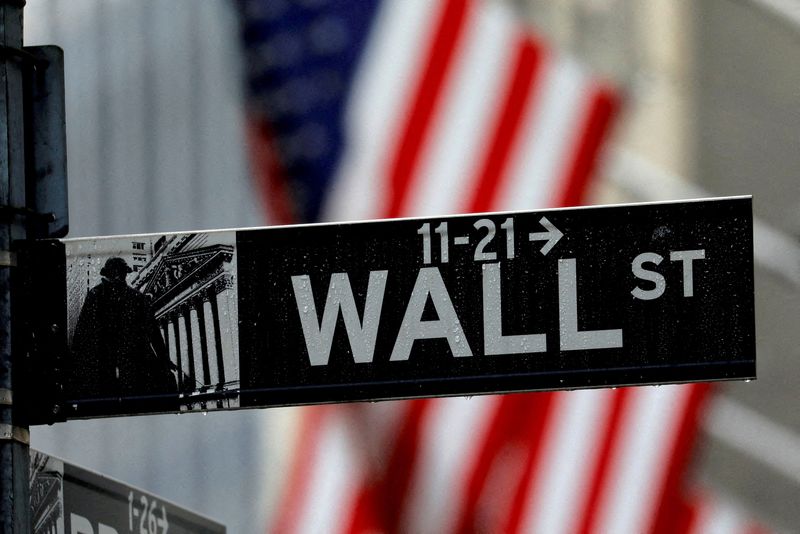By Jamie McGeever
ORLANDO, Fla. (Reuters) -As some banks publish their semi-serious market predictions for the year ahead, the utterly wild ride that blindsided everyone in 2022 suggests that, this time around, they should perhaps indeed be taken semi-seriously.
After all, this time last year it is safe to say double-digit inflation in the West, the most aggressive U.S. monetary policy tightening cycle in 40 years, Japanese FX intervention to buy yen, and by some measures the biggest ever crash in government bonds were not consensus calls.
But war in Europe changed everything. The global macro, policy and political mix dynamic has never been more uncertain, and standard economic and market models based on mean reversion and historical precedence have rarely been less useful.
It is against this backdrop that Saxo Bank and Standard Chartered (LON:STAN) have released their extremely-out-of-consensus 'Outrageous Predictions' and 'Market Surprises of 2023' forecasts, respectively.
As analysts at Saxo note, these are "unlikely but underappreciated events which, if they were to occur, would send shockwaves across the financial markets as well as political and popular cultures."
Standard Chartered's global head of research Eric Robertsen makes clear: "These scenarios are independent of each other. They are not intended to be economically or intellectually consistent with each other."
Standard Chartered's are a little more market-specific, and Saxo's veer more into the political sphere.
Yet what is striking about them is how many seem fairly plausible. The offshore yuan rising to 6.40 per dollar or the euro rising to $1.25? The Nasdaq falling another 50%? President Biden impeached, the creation of a joint European Armed Forces, or widespread price controls to cap official inflation?
Given the political, economic and financial market turmoil of the past 12 months, none of these scenarios over the next 12 could be completely ruled out.
What's more, some of these two banks' previous bold predictions have actually come to pass. A small percentage, granted, but they are the low-probability/high return bets that can make a trader's or analyst's career.
WALL, MEET MUD
Let's take a few of these predictions, starting with Standard Chartered's yuan and euro calls.
The yuan at 6.40/$ would require it to appreciate around 9% from current levels, not that controversial given that it weakened 9% last year. Plus, it was trading at 6.40/$ only eight months ago.
Is that any less likely than billionaire hedge fund manager Bill Ackman's well-publicized bet that the Hong Kong dollar's 39-year-old peg to the U.S. dollar will soon break? Almost certainly not.
Similarly, the euro rising a further 20% to $1.25 is not so outlandish considering the currency was at a 20-year low as recently as September and has already recovered 10% since then.
The economic, financial and political foundations for that recovery might be harder to build, but if peace in Ukraine comes as suddenly as war did, you wouldn't bet against it. Deutsche Bank (ETR:DBKGn)'s baseline 2023 economic outlook even has euro zone growth outpacing U.S. growth next year.
Even continued war and geopolitical tension could send the euro to $1.25 if, as per Saxo Bank, a 'united Army of Europe' is founded. The thinking goes like this: the new Armed Forces are funded with 10 trillion euros of new bonds based on member country's share of overall GDP, delivering a huge investment boost and significantly deepening EU sovereign debt market integration.
If inflation tripped up many people this year - not least central bankers - who's to say it won't next year too? The extreme forecasts would be rampant inflation or a sudden collapse into deflation, and recency bias suggests spiraling inflation would be less of a shock for markets.
If so, it is perhaps understandable why both banks have surging gold prices as one of their bold calls (putting aside for a minute gold's questionable inflation- hedging properties).
Standard Chartered is going for a 30% spike, and Saxo a surge of around 70% to top $3,000 an ounce. The last time gold rose that much in a year was 1979. Again, unlikely, but this year threw up plenty of parallels with the late 1970s/early 1980s so why not one more?
Crazy calls from years gone by have turned out to be not so crazy after all - Saxo called Brexit in 2015 and bitcoin tripling in value in 2017, while Standard Chartered last year correctly said a 100% rally in agricultural commodities would fuel a surge in food inflation.
At the end of the day, if you throw enough mud at the wall some of it will stick. Which, if any, of the banks' bold 2023 calls below will stick?
SAXO:
- A billionaire coalition which creates a trillion-dollar Manhattan Project for energy
- French President Macron resigning
- Gold rocketing to $3,000 as central banks fail on inflation mandate
- The foundation of the EU Armed Forces
- A country agreeing to ban all meat production by 2030
- Britain holding an UnBrexit referendum
- Widespread price controls being introduced to cap official inflation
- China, India and OPEC+ leave the IMF and agree to trade with a new reserve asset
- Japan pegging USD/JPY at 200 to 'sort out' its financial system
- A tax haven ban that kills private equity
STANDARD CHARTERED:
- Brent oil falls below $40 a barrel
- The euro rallies to $1.25 on political stability and economic recovery
- The Fed cuts rates by 200 basis points in 2023
- The Nasdaq falls another 50% to 6000
- Dollar/yuan falls to 6.40
- Food prices collapse, fueling fears of deflation
- Gold rallies 30% as the collapse in crypto and firms spreads

- Republicans impeach U.S. President Joe Biden
(The opinions expressed here are those of the author, a columnist for Reuters.)
(By Jamie McGeever; Editing by Andrea Ricci)